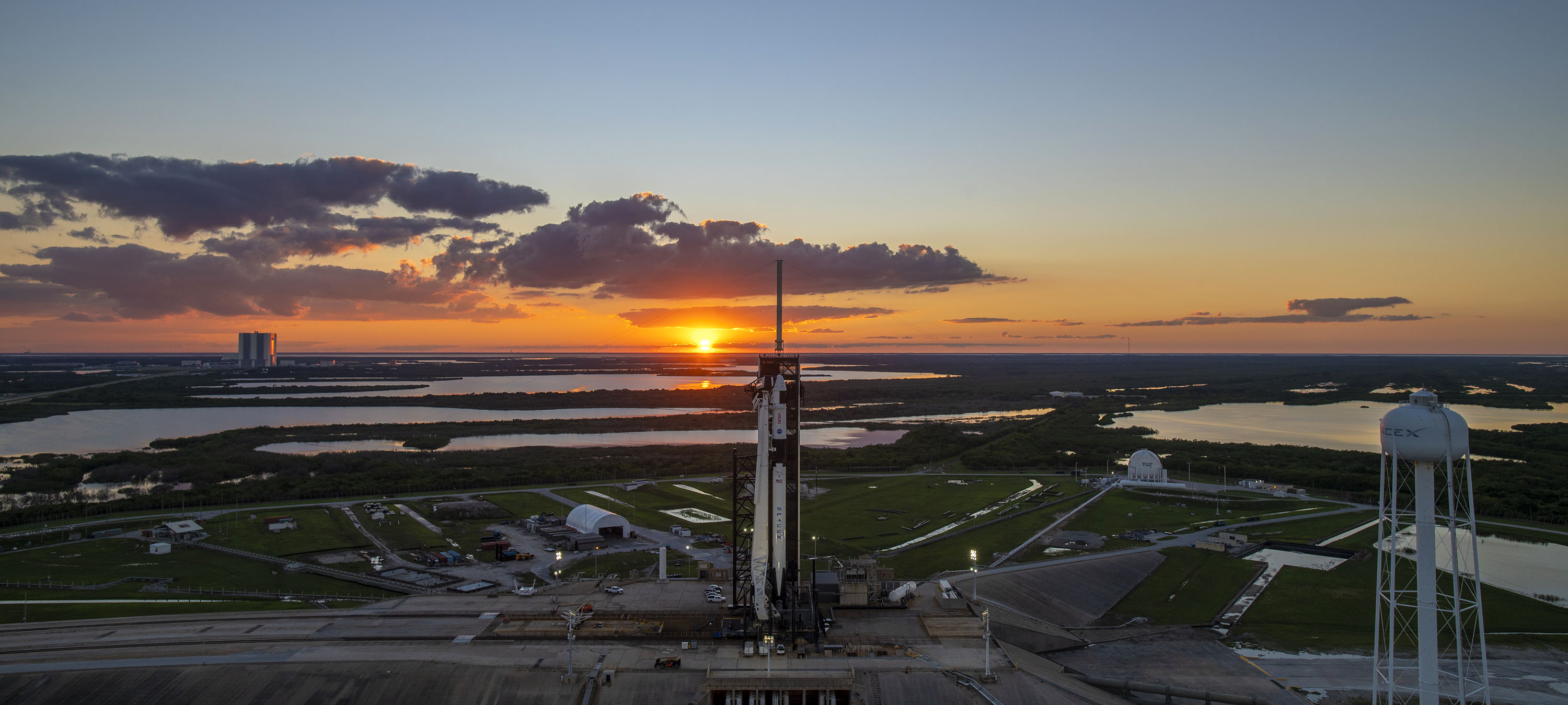
SpaceX's Crew-5 astronaut mission is still on target to launch Wednesday (Oct. 5), though there are a few caveats.
NASA and SpaceX teams held a launch readiness review (LRR) today for Crew-5, which is scheduled to lift off from Pad 39A at Florida's Kennedy Space Center (KSC) on Wednesday at 12 p.m. EDT (1600 GMT).
That remains the plan, for today's review identified no serious issues with Crew-5's Falcon 9 rocket, Dragon capsule or any other aspect of the mission. Teams are still working on three open issues, but both SpaceX and NASA expressed confidence that all of them will be cleared up relatively quickly.
"We had a good LRR," Steve Stich, manager of NASA's Commercial Crew Program, said during a press conference this evening. "We are proceeding toward launch on Wednesday."
Related: SpaceX rolls rocket to pad ahead of Crew-5 astronaut launch (photos)
One of the open issues involves a thrust vector control actuator for one of the nine Merlin engines that power the Falcon 9's first stage. The actuator, which helps control the direction of the engine's thrust, behaved abnormally during a static fire engine test that SpaceX performed over the weekend, Stich and others said during this evening's briefing.
The second issue is a communications problem that affects the station-keeping ability of Just Read the Instructions, the autonomous SpaceX droneship on which the Falcon 9's first stage will land shortly after Crew-5's liftoff. The third issue is a leak with the Dragon capsule's portable fire extinguisher.
Get the Space.com Newsletter
Breaking space news, the latest updates on rocket launches, skywatching events and more!
Teams are troubleshooting all three of these problems and are optimistic they'll be in the rear-view mirror soon.
"I don't see any showstoppers here," Benji Reed, senior director of human spaceflight programs at SpaceX, said in the briefing.
SpaceX plans to replace the misbehaving actuator on the Falcon 9 tonight, Reed said, stressing that the company has done such work before. Teams are trying to resolve the droneship communications issue remotely at the moment, he added, though SpaceX may end up sending people aboard the vehicle as early as Tuesday (Oct. 4) to work on it if need be.
The fire extinguisher leak, meanwhile, will be addressed by replacing a variety of components, followed by testing to see if the fix held.
"We actually expect we will have all of that done by tomorrow morning — again, well in advance of Crew-5 [liftoff]," Reed said of the fire extinguisher work.
NASA and SpaceX identified two minor issues during the Crew-5 flight readiness review, which was held last Monday (Sept. 26).
One involved bonds on a portion of the Dragon's perimeter, and the other concerned potentially non-standard welds in composite overwrapped pressure vessels (COPVs), bottle-like structures that are part of the Falcon 9's propulsion system.
Team members said at the time that they expected to clear both of those issues after further vetting and analysis. And that apparently came to pass, for neither problem was mentioned during tonight's post-LRR briefing.
Crew-5 will send four astronauts — NASA's Nicole Mann and Josh Cassada, Japanese spaceflyer Koichi Wakata and cosmonaut Anna Kikina — to the International Space Station for a roughly five-month stay. As its name suggests, the mission is the fifth contracted crewed flight to the orbiting lab that SpaceX will fly for NASA.
Crew-5 will make history in multiple ways. Mann will become the first Native American woman to reach space, for example, and Kikina will become the first Russian to fly with SpaceX.
Crew-5 was supposed get off the ground today, but Hurricane Ian pushed the liftoff back by two days.
The storm had a much more significant effect on the timeline for NASA's highly anticipated Artemis 1 moon mission. NASA had been aiming to launch the uncrewed Artemis 1 on Sept. 27, but Ian forced the team to roll the huge rocket off KSC's Pad 39B and back to the facility's Vehicle Assembly Building.
NASA is now targeting Nov. 12 to Nov. 27 for the Artemis 1 liftoff. (Crew-5's Falcon 9 and Dragon didn't need to flee the pad to wait out Ian; they didn't roll out to Pad 39A until Saturday, Oct. 1.)
Mike Wall is the author of "Out There" (Grand Central Publishing, 2018; illustrated by Karl Tate), a book about the search for alien life. Follow him on Twitter @michaeldwall. Follow us on Twitter @Spacedotcom or on Facebook.
Join our Space Forums to keep talking space on the latest missions, night sky and more! And if you have a news tip, correction or comment, let us know at: community@space.com.

Michael Wall is a Senior Space Writer with Space.com and joined the team in 2010. He primarily covers exoplanets, spaceflight and military space, but has been known to dabble in the space art beat. His book about the search for alien life, "Out There," was published on Nov. 13, 2018. Before becoming a science writer, Michael worked as a herpetologist and wildlife biologist. He has a Ph.D. in evolutionary biology from the University of Sydney, Australia, a bachelor's degree from the University of Arizona, and a graduate certificate in science writing from the University of California, Santa Cruz. To find out what his latest project is, you can follow Michael on Twitter.









